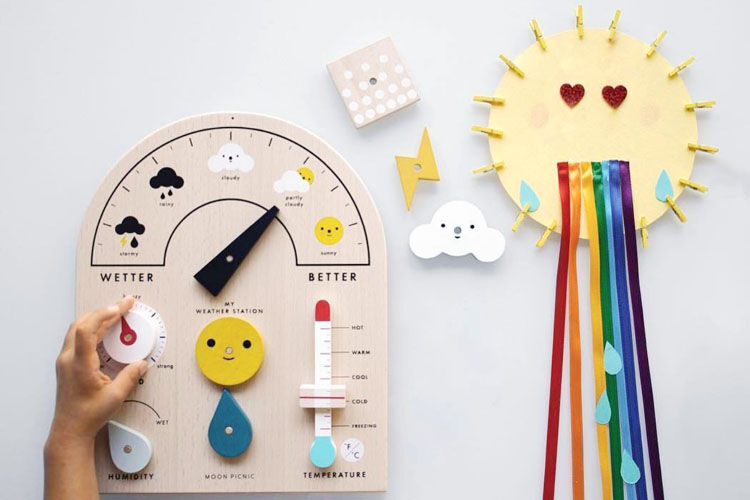Educate Kids about Weather Stations - Ideas
Introduction
Children are often afraid of thunderstorms, but they enjoy jumping in puddles and looking at rainbows after the storm has passed. Making weather observations and discussing climate are excellent ways to teach children about science, especially because weather is something that children can easily relate to and understand. Weather and climate have an impact on children’s lives every day, whether it’s clear and sunny outside or rainy and windy.
Weather-related lesson plans are also simple to develop because the weather is constantly changing and can be measured and observed by students of all ages. Giving children weather information allows you to talk to them about the importance of staying alert when there is a chance of bad weather and knowing what to do if a severe storm or natural disaster occurs. Here are a few ideas for teaching children in your care about weather and climate.
Ideas to teach your kids about weather stations
Set up a weather station in the classroom. Providing a location for children to record each day’s temperature, precipitation, humidity, and so on is an important part of teaching children about weather. If at all possible, locate your classroom weather station outside to give children hands-on experience collecting and recording weather data. Make sure the station has a thermometer, barometer, hygrometer, and other weather-measuring instruments. If your weather station cannot be placed outside, your options are somewhat limited. Set up a weather station and print out weather data from the previous day for kids to record. Another option is to have your children research real-time weather data for your community on the computer and record their findings.
Share your weather observations and fun facts. Make time to go over the children’s data and observations about the weather. Are they noticing seasonal changes in the environment? Do they know what’s causing the temperature to rise or fall? Do younger children understand the differences between the seasons? Discussing a variety of weather information, such as The Weather Channel’s fun facts, can also pique children’s interest in weather and science and make learning more enjoyable.
Hurricanes can be tracked, and funnel clouds can be learned about. Depending on the age and ability of the children in your care, you can have them track hurricanes individually on a map or a piece of graph paper, or as a class on a bulletin board or computer programme. There are also science experiments that you can do as a class to simulate the vortex of a tornado on a much smaller scale. Use these activities to teach children about hurricanes and tornadoes, as well as to provide them with the tools and skills they’ll need if a natural disaster strikes.
Spend some time watching or reading the local weather forecast. Many news stations record their weather forecasts and make them available to viewers online. This is an excellent opportunity to watch the local weather forecast as a class and discuss the forecast and new weather terms used by the meteorologist. You can also read the local weather forecast in a newspaper or on a weather website.
Throughout the school year, keep a weather journal. Weather journals are an excellent way for children to record their weather observations as well as any new information they learn about weather and climate. Consider photographing various weather-related scenes and having children add them to their journals. Each child will then have something to refer to in order to review everything they’ve learned about weather and climate.
Conclusion
Remember that weather station for kids should be enjoyable and educational, and that any activities you engage in should broaden children’s understanding of weather and climate, as well as incorporate new weather words for children to learn. Browse our weather and climate materials to see what kinds of weather-related items you can add to your classroom.

Comments
Post a Comment